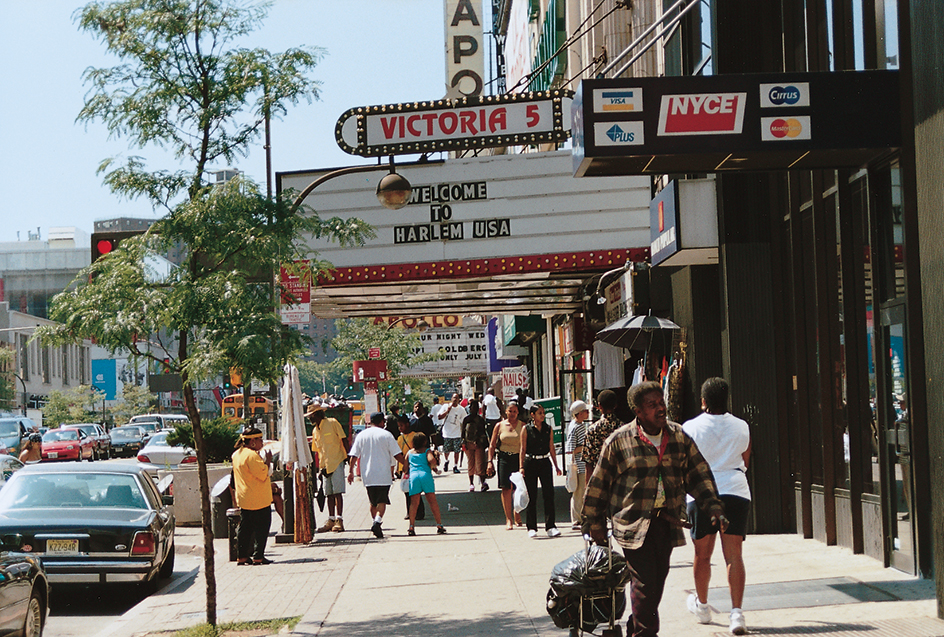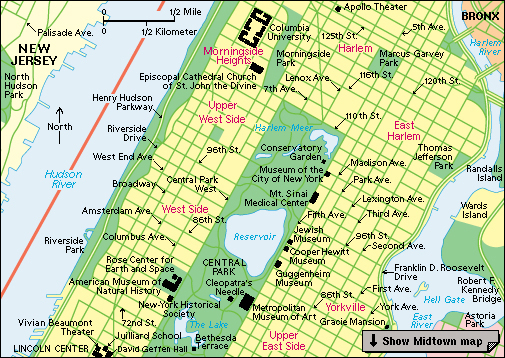Harlem is a historic neighborhood in New York City. It lies north of Central Park in the borough (district) of Manhattan. In the early 1900’s, the neighborhood became known as the cultural capital of Black America. Landmarks in Harlem include the Apollo Theater, the Abyssinian Baptist Church, and many other sites important to New York and African American history.

The Harlem area was once home to a band of the Indigenous (native) Lenape people. The Lenape called the area Muscota (also spelled Muscoota), meaning flat place. In 1658, Dutch settlers named a village there Nieuw Haarlem, after a city in the Netherlands. The English took over Manhattan in 1664, and the area became known simply as Harlem. Farms and large estates occupied the area for much of the next 200 years. Beginning around 1830, cheap property in Harlem attracted large numbers of European immigrants. Harlem’s population grew rapidly in the late 1800’s, when the construction of new commuter rail lines improved transportation to other parts of Manhattan. Real estate owners built many houses and apartment buildings.
In the early 1900’s, a real estate crash struck the neighborhood. Philip Payton, a businessman who ran the Afro-American Realty Company, began acquiring white-owned properties and renting them to Black residents. Many middle-class African Americans moved to the area. The migration to Harlem continued through the 1920’s. Harlem became a center of African American culture. Artists, writers, musicians, and business leaders contributed to a cultural outpouring known as the Harlem Renaissance.

Harlem has been a leading center of African American political activity. The National Association for the Advancement of Colored People (NAACP), a prominent civil rights organization founded in 1909, established its first local chapter in Harlem in 1911. In 1944, Harlem preacher and political leader Adam Clayton Powell, Jr., became the first African American to represent the state of New York in the United States Congress.
The Great Depression, a huge economic slump of the 1930’s, had a devastating effect on Harlem. Much of the neighborhood’s housing stock deteriorated. Residents complained of high rents and racial discrimination. Allegations of police brutality and other incidents contributed to riots in 1935, 1943, 1964, and 1968.
Poverty and high crime rates remained commonplace in Harlem through the late 1900’s. Economic development projects in the 1990’s and early 2000’s improved conditions for many residents.
See also Harlem Renaissance; Manhattan; New York City.
